
Harlequin is the best-known of the zanni or comic servant characters from the Italian Commedia dell'arte. The role is traditionally believed to have been introduced by Zan Ganassa in the late 16th century, was definitively popularized by the Italian actor Tristano Martinelli in Paris in 1584–1585, and became a stock character after Martinelli's death in 1630.

Zanni, Zani or Zane is a character type of Commedia dell'arte best known as an astute servant and trickster. The Zanni comes from the countryside and is known to be a "dispossessed immigrant worker". Through time, the Zanni grew to be a popular figure who was first seen in commedia as early as the 14th century. The English word zany derives from this persona.
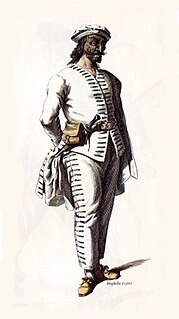
Brighella is a comic, masked character from the theatre style Commedia dell'arte. His early costume consisted of loosely fitting, white smock and pants with green trim and was often equipped with a batocio or slap stick, or else with a wooden sword. Later he took to wearing a sort of livery with a matching cape. He wore a greenish half-mask displaying a look of preternatural lust and greed. It is distinguished by a hook nose and thick lips, along with a thick twirled mustache to give him an offensive characteristic. He evolved out of the general Zanni, as evidenced by his costume, and came into his own around the start of the 16th century.
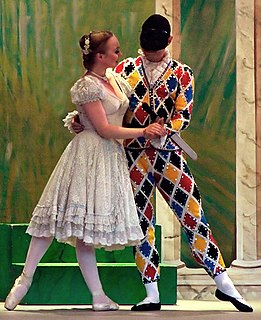
Columbina is a stock character in the Commedia dell'Arte. She is Harlequin's mistress, a comic servant playing the tricky slave type, and wife of Pierrot. Rudlin and Crick use the Italian spelling Colombina in Commedia dell'arte: A Handbook for Troupes.

Gli Innamorati were stock characters within the theatre style known as commedia dell'arte, which appeared in 16th century Italy. In the plays everything revolves around the Lovers in some regard. These characters were present within commedia plays for the sole purpose of being in love with one another, and moreover with themselves. Despite facing many obstacles, the Lovers are always united by the end.

Il Capitano is one of the four stock characters of Commedia dell'arte. He most likely was never a "Captain" but rather appropriated the name for himself.
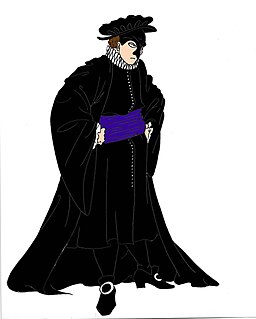
Il Dottore is a commedia dell'arte stock character, one of the vecchi, or "old men", whose function in a scenario is to be an obstacle to the young lovers. Il Dottore and Pantalone are the comic foil of each other, Pantalone being the decadent wealthy merchant, and Il Dottore being the decadent erudite. He has been part of the main canon of characters since the mid 1500s.

Pulcinella is a classical character that originated in commedia dell'arte of the 17th century and became a stock character in Neapolitan puppetry. Engineered specifically to be the star of southern Italy, he is described as "the voice of the people, as the direct expression of a people as lively and spirited as the Neapolitans is never questioned." Pulcinella's versatility in status and attitude has captivated audiences worldwide and kept the character popular in countless forms since his introduction to commedia dell'arte by Silvio Fiorillo in 1620.
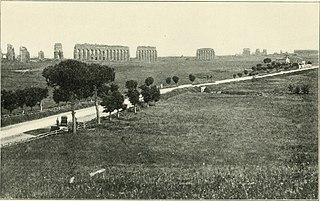
The Atellan Farce, also known as the Oscan Games, were masked improvised farces. The games were very popular in Ancient Rome, and usually put on after longer pantomime plays. The origin of the Atellan Farce is uncertain but the farces are similar to other forms of ancient theatre, such as the South Italian Phlyakes, the plays of Plautus and Terrence, and Roman mime. Most historians believe the name is derived from Atella, an Oscan town in Campania. The farces were written in Oscan and imported to Rome in 391 BC. In later Roman versions, only the tridiculous characters read their lines in Oscan, while the others read in Latin.

Isabella Andreini, also known as Isabella Da Padova, was an Italian actress and writer. Considered beautiful, elegant, and well educated, she was one of the most famous performers of her time.

The Servant of Two Masters is a comedy by the Italian playwright Carlo Goldoni written in 1746. Goldoni originally wrote the play at the request of actor Antonio Sacco, one of the great Truffaldinos in history. His earliest drafts had large sections that were reserved for improvisation, but he revised it in 1753 in the version that exists today. The play draws on the tradition of the earlier Italian commedia dell'arte.

Pedrolino is a primo zanni, or comic servant, of the Commedia dell'Arte; the name is a hypocorism of Pedro (Peter), via the suffix -lino. The character made its first appearance in the last quarter of the 16th century, apparently as the invention of the actor with whom the role was to be long identified, Giovanni Pellesini. Contemporary illustrations suggest that his white blouse and trousers constituted "a variant of the typical zanni suit", and his Bergamasque dialect marked him as a member of the "low" rustic class. But if his costume and social station were without distinction, his dramatic role was certainly not: as a multifaceted "first" zanni, his character was—and still is—rich in comic incongruities.

Coviello is a minor character in the Commedia dell'arte. He falls into the category of the zanni. His name is a double diminutive of the name Giacomo. In English, he might be called Jimmy or Jackie.

Burattino, also Burrattino or Burratino, is a minor commedia dell'arte character of the zanni class.

I Gelosi was an Italian acting troupe that performed commedia dell'arte from 1569 to 1604. Their name stems form their motto: Virtù, fama ed honor ne fèr gelosi. This was long thought to mean "Virtue honour, and renown are only for the jealous", signifying that the former qualities could only be attributed to those who guarded them jealously. Modern reevaluations have considered "zealous" as a more accurate translation over "jealous"; redefining their motto to signify that, as actors, they were zealous to please.

Commedia dell'arte was an early form of professional theatre, originating from Italy, that was popular in Europe from the 16th to the 18th century. Commedia dell'arte is also known as commedia alla maschera, commedia improvviso, and commedia dell'arte all'improvviso. Commedia is a form of theatre characterized by masked "types" which began in Italy in the 16th century and was responsible for the advent of actresses and improvised performances based on sketches or scenarios. A commedia, such as The Tooth Puller, is both scripted and improvised. Characters' entrances and exits are scripted. A special characteristic of commedia dell'arte are the lazzi. A lazzo is a joke or "something foolish or witty", usually well known to the performers and to some extent a scripted routine. Another characteristic of commedia dell'arte is pantomime, which is mostly used by the character Arlecchino (Harlequin).

Beltrame is a traditional character of the Italian commedia dell'arte associated to the city of Milan, and dating back to the 16th-17th century or earlier. It is also often referenced by the full name Beltrame di Milano and also as Beltrame di Gaggiano or Beltrame de la Gippa.
Flaminio Scala, commonly known by his stage name, Flavio, was a sixteenth-century Italian stage actor of Commedia dell'Arte, scenario writer, playwright, director, producer, manager, agent, and editor. Considered one of the most important figures in Renaissance theatre, Scala is remembered today as the author of the first published collection of commedia scenarios, Il Teatro delle Favole Rappresentative, short comic plays that served as inspiration to playwrights such as Lope de Vega, William Shakespeare, Ben Jonson, and Molière.
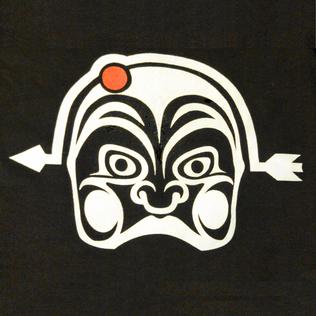
i Sebastiani is a Commedia dell'Arte theatre troupe formed in 1990 by Jeff Hatalsky. To the present day, i Sebastiani has performed for thousands of fans across the United States and Canada. The company has travelled as far as Montreal to the north, Miami to the south, and Texas to the west, performing more than 100 different improvisational scenarios.

















